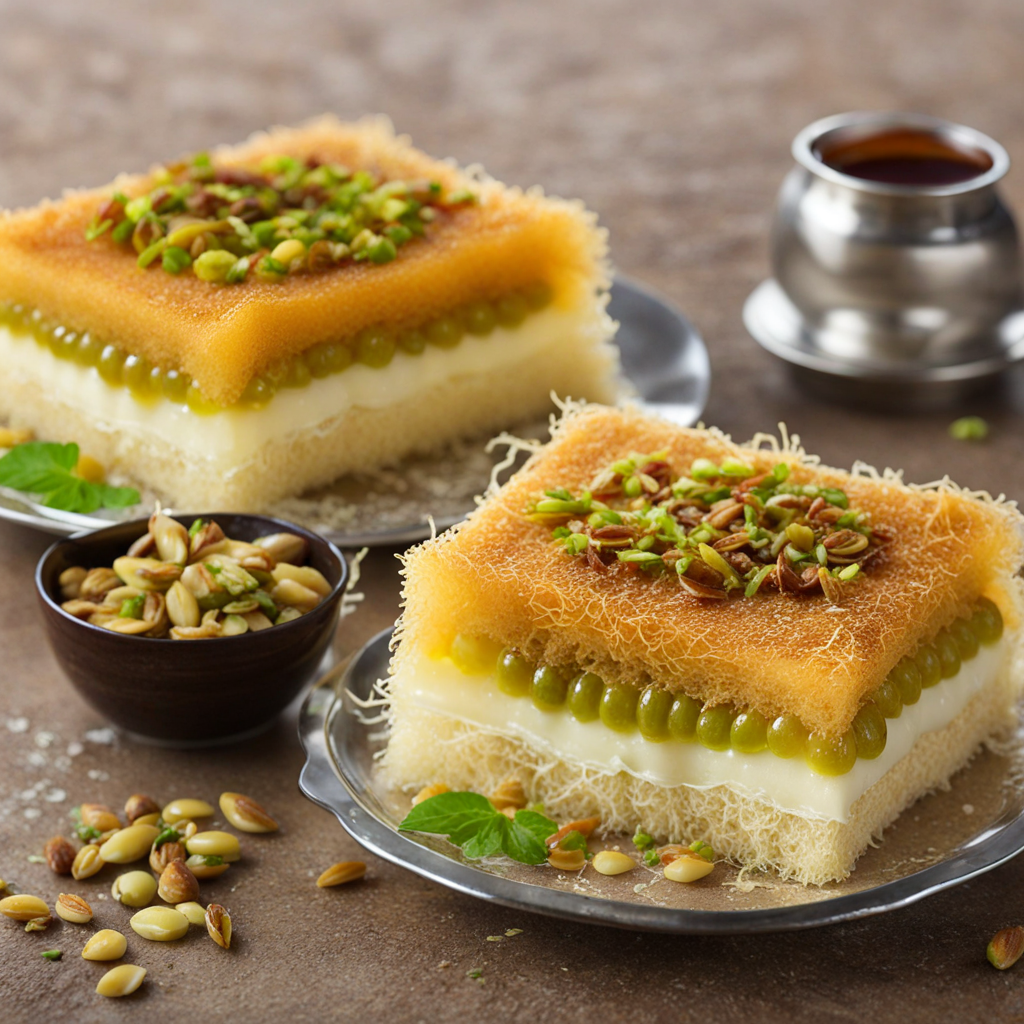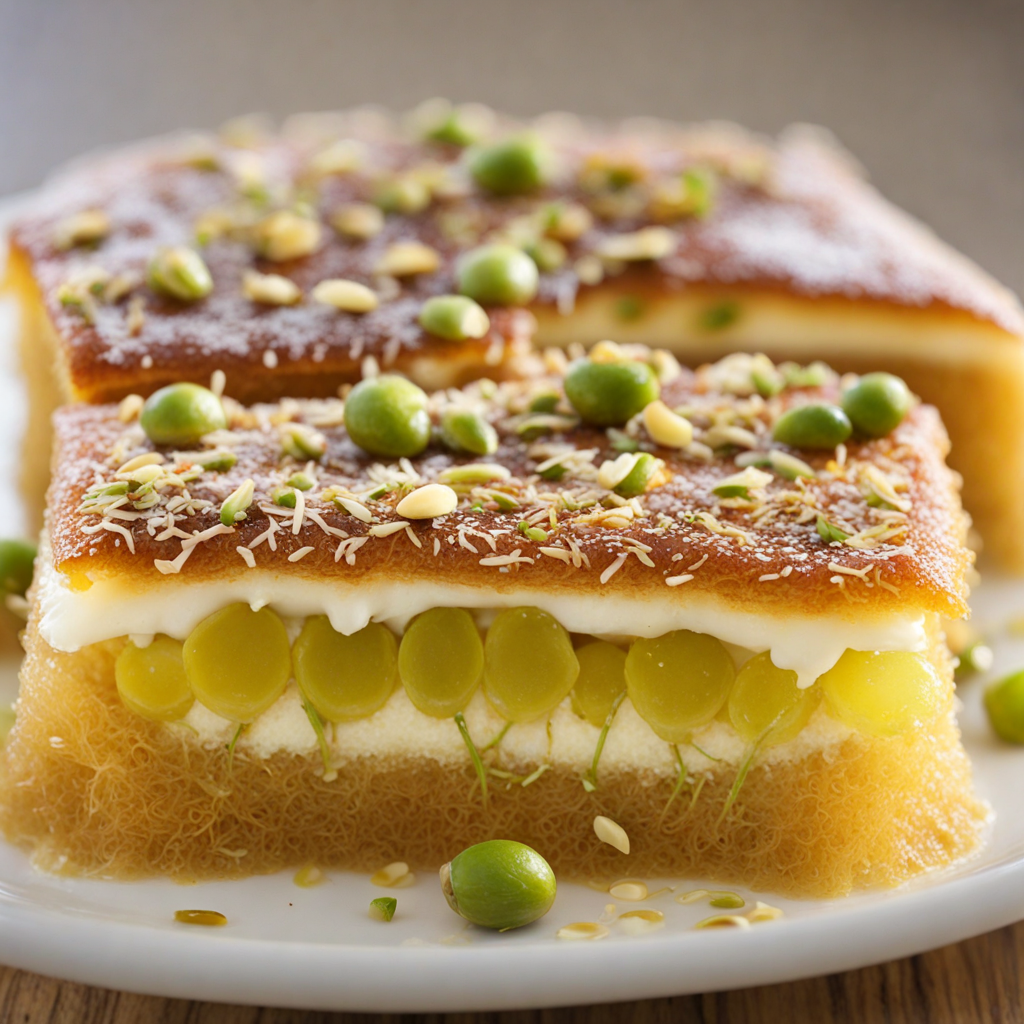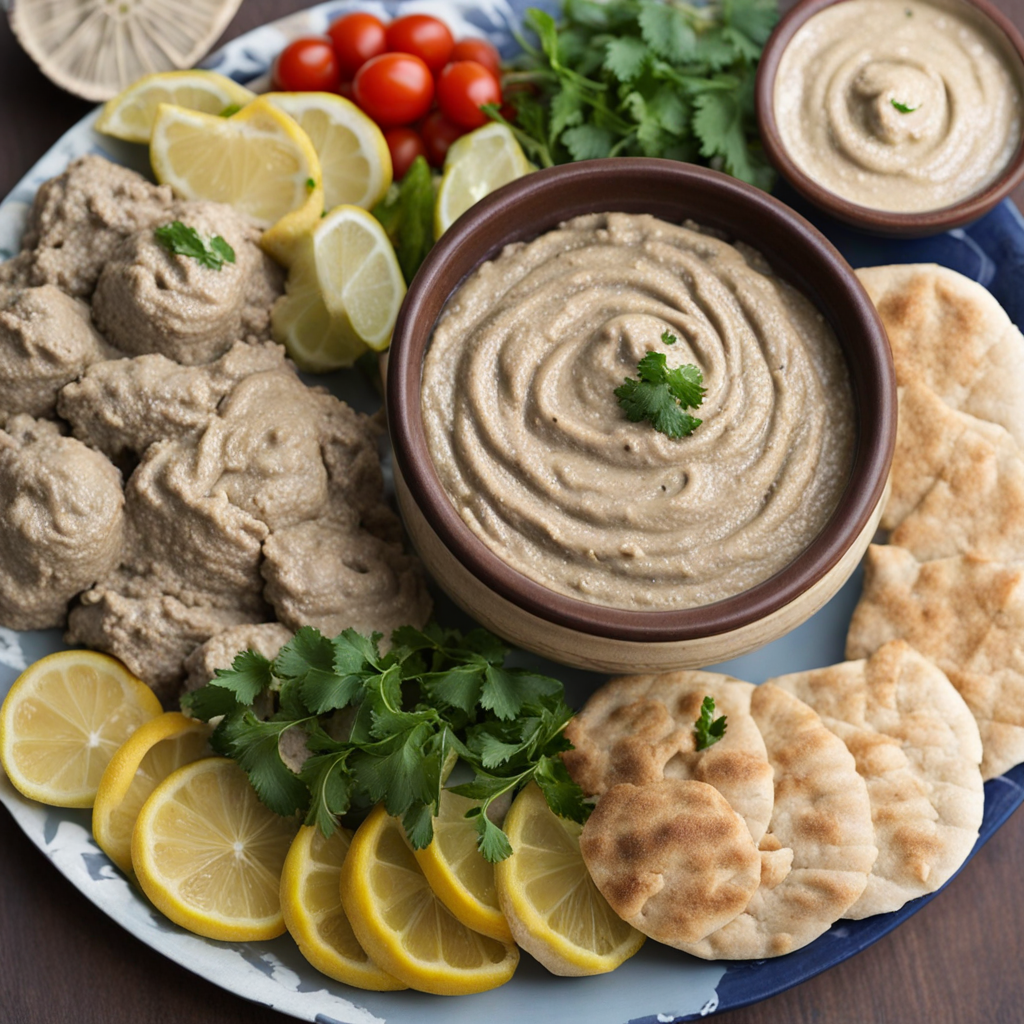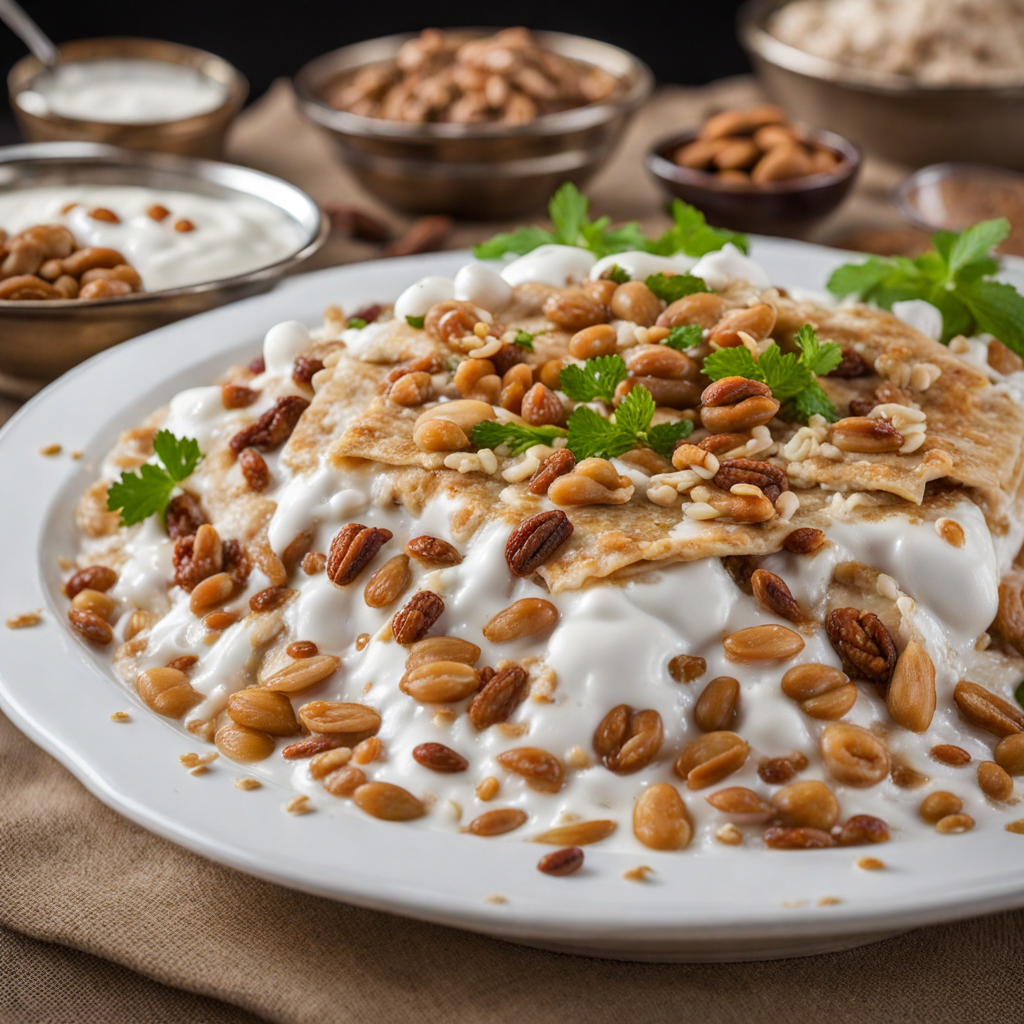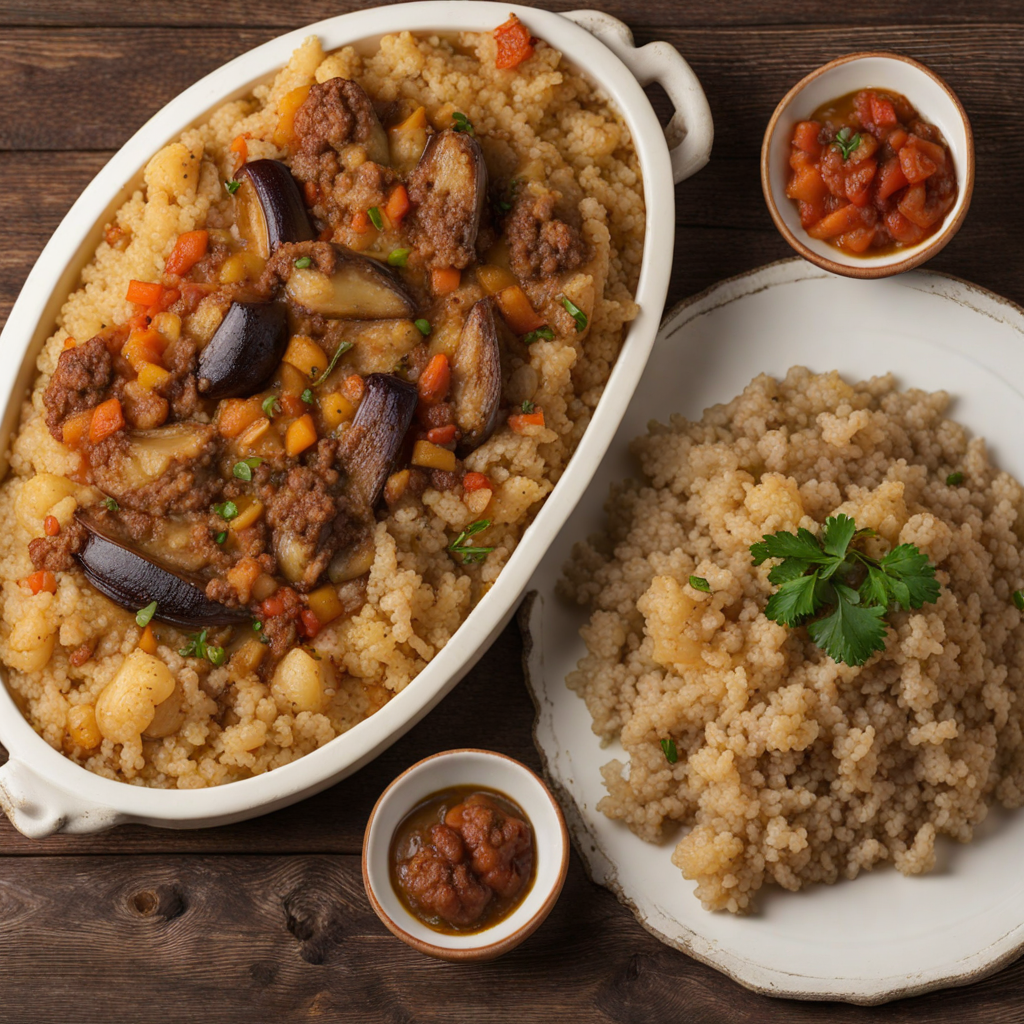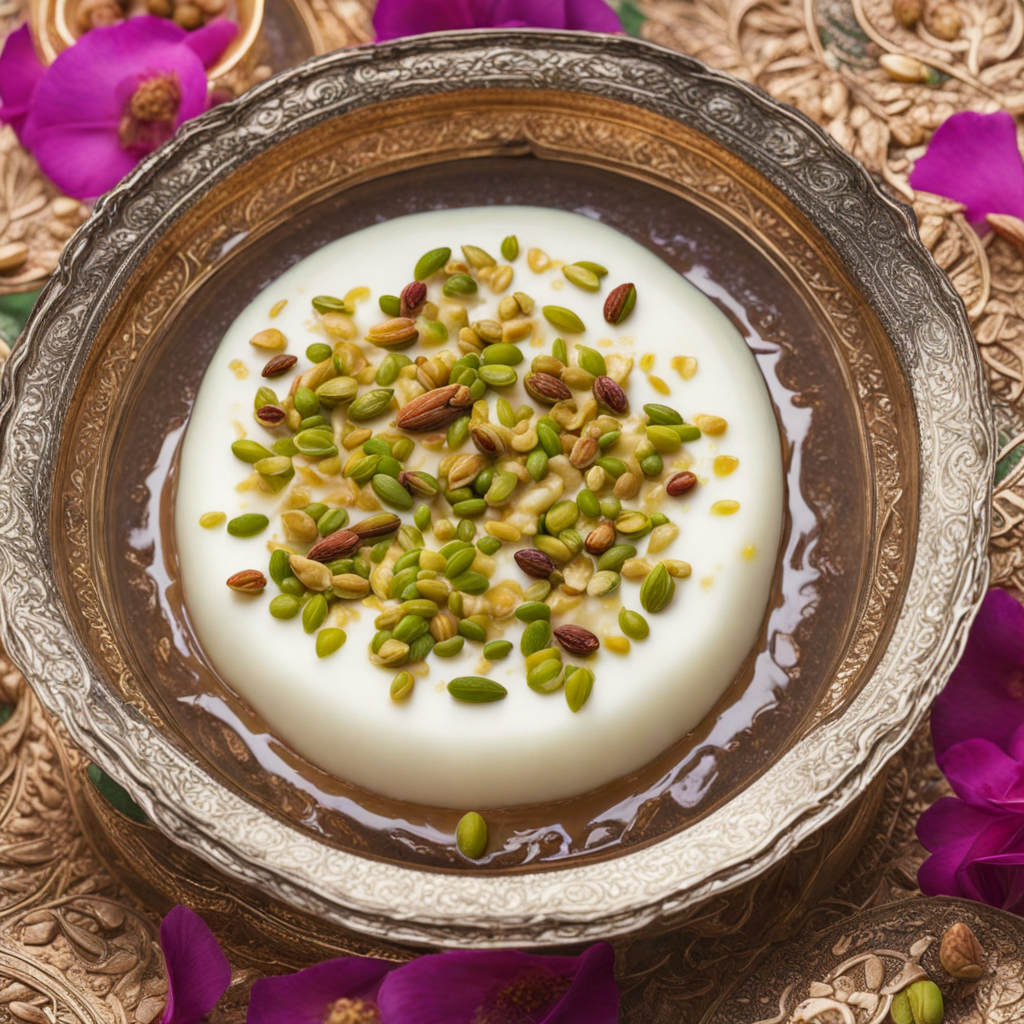Knafeh
Knafeh is a delightful Jordanian dessert that embodies the perfect balance of flavors and textures, making it a must-try for any food enthusiast. This traditional sweet is primarily made from thin strands of dough called kataifi, which are layered with a rich filling of either soft cheese or a sweet semolina mixture. Once assembled, the dish is baked until golden brown, creating a crispy exterior that contrasts beautifully with the gooey, melt-in-your-mouth interior. The aroma of baking Knafeh is irresistible, filling the air with hints of butter and sugar that beckon you to indulge. Once out of the oven, Knafeh is generously drenched in a sweet syrup made from sugar, water, and a splash of rose or orange blossom water, which adds a floral note that elevates the dessert to new heights. The syrup seeps into the layers, enhancing the overall sweetness while keeping the dish moist. Often garnished with crushed pistachios or walnuts, Knafeh not only pleases the palate but also dazzles the eyes with its vibrant colors and textures. Each bite is a heavenly experience, where the slight saltiness of the cheese harmonizes with the sweetness of the syrup, creating a flavor profile that is both complex and addictive. In Jordan, Knafeh is more than just a dessert; it is a beloved cultural symbol and often enjoyed during special occasions, family gatherings, or simply as a treat after a hearty meal. The experience of sharing Knafeh with loved ones adds to its charm, as it is traditionally served warm and often shared from a large platter. Whether enjoyed in a local bakery or made at home, Knafeh offers a taste of Jordanian hospitality, inviting you to savor a slice of this exquisite culinary heritage.
How It Became This Dish
Origin of كنافة كنافة (Kunafa) is a beloved dessert that has become synonymous with Middle Eastern cuisine, particularly in Jordan. Its origins are often traced back to the Levant region, where it is thought to have been created during the Umayyad Caliphate (661-750 CE). The earliest written references to a dessert resembling كنافة date back to the 10th century, specifically in the writings of the famous Arabic poet Al-Ma'arri, who mentioned a dish called "knafa" in his works. This suggests that the dessert has deep historical roots, enjoyed by various cultures over centuries. The fundamental components of كنافة consist of thin noodle-like pastry known as "kataifi," which is typically made from semolina or flour. It is often layered with a filling of cheese, nuts, or cream, and then soaked in a sweet syrup, usually flavored with rose or orange blossom water. The combination of crispy, soft, and sweet textures creates a unique culinary experience that has captivated the taste buds of many. \n\n Cultural Significance in Jordan In Jordan, كنافة holds a special place not only as a dessert but also as a symbol of hospitality and celebration. It is a staple at family gatherings, weddings, and religious festivals, serving as a centerpiece for many communal meals. The act of preparing كنافة is often considered an art form, passed down through generations, with families boasting their own secret recipes and techniques. One of the most famous variations of كنافة in Jordan is "كنافة نابلسية" (Nabulsi Kunafa), originating from the city of Nablus in Palestine. This version is characterized by its use of a special type of white cheese known for its elasticity and mild flavor. Over time, كنافة has been adapted to include local ingredients and flavors, making it an integral part of Jordan’s culinary identity. It is often served with a sprinkle of pistachios or almonds, further enhancing its visual appeal and texture. \n\n Development Over Time As the centuries passed, كنافة evolved, reflecting the cultural and social changes within the region. During the Ottoman Empire (1299-1922), which encompassed much of the Middle East, the dessert gained further popularity, leading to the establishment of many dedicated كنافة shops, particularly in urban centers. These establishments became known as "مناقيش" (manakish) and offered a variety of sweet pastries, including different types of كنافة. In the 20th century, as globalization began to influence culinary trends, كنافة found its way beyond the Middle East, captivating palates around the world. Its unique flavor profile and intricate preparation methods attracted food enthusiasts and chefs alike. In Jordan, the dessert has become a symbol of national pride, often showcased at cultural events to highlight the country’s rich culinary heritage. \n\n Modern Adaptations Today, كنافة is not only a traditional dessert but has also seen numerous modern adaptations that cater to contemporary tastes. Innovative chefs have started to experiment with flavors and presentations, creating fusion dishes that incorporate ingredients from other cuisines. Variations such as كنافة with chocolate, fruit, or even ice cream have emerged, appealing to younger generations and food adventurers. In addition to these adaptations, the rise of social media has played a significant role in popularizing كنافة. Platforms like Instagram and TikTok have allowed food enthusiasts to share their experiences and creative takes on this classic dessert, further contributing to its global recognition. As a result, كنافة has transcended its traditional boundaries, becoming a culinary trend that is celebrated in various forms across the world. \n\n Conclusion As we delve into the history of كنافة, it becomes clear that this dessert embodies more than just flavor; it encapsulates cultural identity, tradition, and the spirit of community. From its origins in the ancient Levant to its contemporary adaptations, كنافة remains a testament to the enduring power of food as a connector of people and cultures. Its evolution reflects the dynamic nature of culinary heritage, ensuring that it will continue to be enjoyed for generations to come.
You may like
Discover local flavors from Jordan


